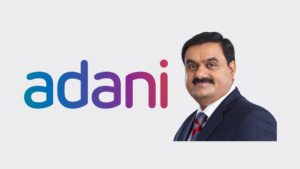
Secure Funding
In the dynamic and ever-evolving landscape of business, securing funding can be a critical catalyst for growth, innovation, and achieving strategic objectives. Whether you’re a startup with a groundbreaking idea or an established company seeking to expand your operations, knowing when to seek funding is a pivotal decision that can greatly influence your business trajectory. In this comprehensive guide, we delve into the intricacies of timing your funding quest for optimal results, offering strategic insights and actionable steps to ensure your approach is well-timed and poised for success.
Understanding the Funding Landscape
Before we delve into the specifics of timing, it’s essential to have a clear grasp of the funding landscape. Funding for businesses typically falls into several categories, including:
- Bootstrapping: Self-funding through personal savings or revenue generated by the business.
- Angel Investors: High-net-worth individuals who invest their personal funds in startups and early-stage companies.
- Venture Capital: Institutional investors who provide capital to high-growth startups in exchange for equity.
- Crowdfunding: Raising funds from a large number of people, often via online platforms.
- Bank Loans: Traditional loans from financial institutions, often requiring collateral and repayment terms.
Each funding source has its unique advantages, requirements, and timelines. However, the key question remains: When is the best time to seek funding for your business?
The Optimal Timing Factors
1. Business Maturity and Traction
Before approaching potential investors or lenders, your business should demonstrate a degree of maturity and traction. Investors are more likely to be attracted to a business that has a proven concept, a clear market need, and initial customer validation. Having a minimum viable product (MVP) or a track record of consistent revenue growth significantly enhances your credibility in the eyes of potential funders.
2. Market Opportunity and Timing
Timing is not only about your internal business readiness but also about external market dynamics. Seek funding when your industry or market is ripe for disruption or expansion. Demonstrating a deep understanding of market trends, competition, and timing can instill confidence in investors that your business is well-positioned to capture a significant share of the market.
3. Inflection Points and Milestones
Plan your funding round around key milestones that showcase your progress and potential. These milestones could include achieving a certain level of revenue, user base, or product development. Securing funding at strategic inflection points allows you to accelerate your growth trajectory, turning potential investors into partners who are excited to be a part of your success story.
4. Financial Projections and Scalability
Investors are keen on understanding your business’s financial projections and scalability. When seeking funding, ensure that you have a well-researched and realistic financial forecast that outlines how the capital infusion will drive growth and profitability. This not only boosts your credibility but also demonstrates your commitment to the long-term success of the business.
The Green Zone: SEO Credibility
In the digital age, online visibility and credibility play a pivotal role in attracting potential investors and lenders. Search Engine Optimization (SEO) is a powerful tool that can enhance your online presence and ensure that your business is easily discoverable by those looking to invest. Here’s how to ensure your funding-related content is optimized for SEO:
1. Keyword Research
Identify relevant keywords and phrases that potential investors might use when searching for investment opportunities in your industry. Tools like Google Keyword Planner or SEMrush can help you uncover high-traffic, low-competition keywords to incorporate into your content.
2. High-Quality Content
Create informative, engaging, and well-structured content that addresses the needs and concerns of potential investors. Craft articles, blog posts, and landing pages that provide insights into your business’s growth potential, market differentiation, and competitive advantage.
3. Optimized Meta Tags and URLs
Ensure that your content’s meta titles, descriptions, and URLs include your target keywords. These elements play a crucial role in search engine ranking and can influence click-through rates from search results.
4. Mobile-Friendly Design
With an increasing number of users accessing information from mobile devices, it’s essential that your website is responsive and mobile-friendly. Google rewards mobile-optimized sites with higher search rankings.
5. Backlink Strategy
Build a robust backlink strategy by collaborating with reputable industry publications, influencers, and partners. High-quality backlinks from authoritative sources can significantly boost your website’s credibility and SEO ranking.
6. Regular Updates
Consistently update your website with fresh, relevant, and valuable content. Regular blog posts, case studies, and industry insights not only demonstrate your expertise but also signal to search engines that your site is active and authoritative.
Conclusion
Timing your funding quest is a strategic decision that can significantly impact your business’s trajectory. By considering factors such as business maturity, market opportunity, milestones, and financial projections, you can identify the optimal time to seek funding. Moreover, leveraging the power of SEO credibility ensures that your business is easily discoverable by potential investors and lenders, enhancing your chances of securing the funding you need to propel your business to new heights of success. Remember, timing is not just about being at the right place at the right time; it’s about being well-prepared and strategically positioned to seize the opportunity when it arises. Pitch Story







